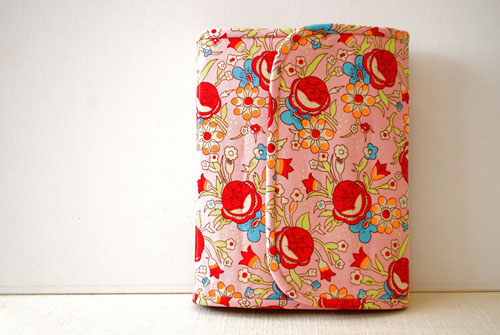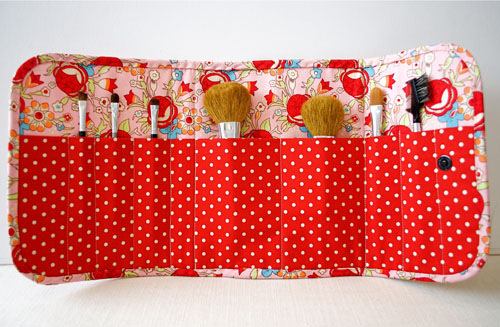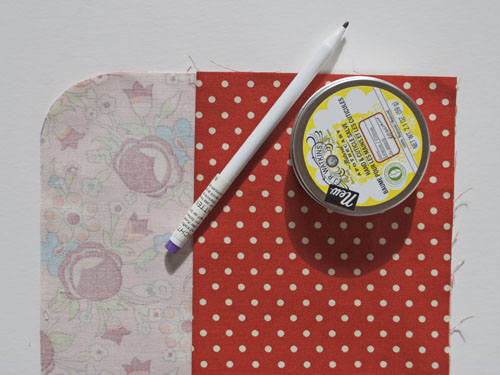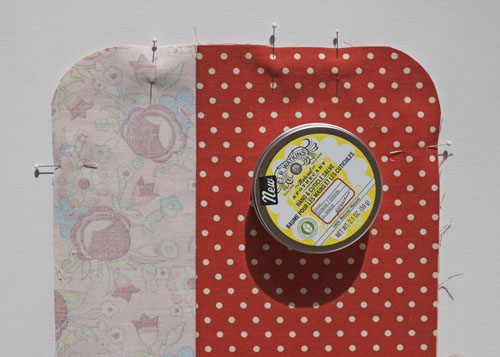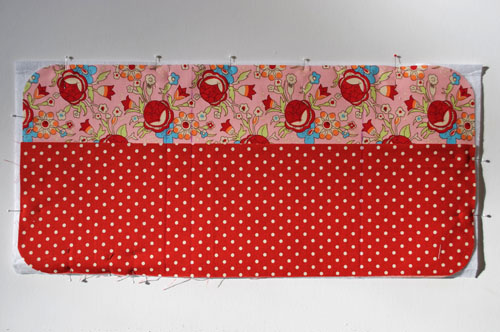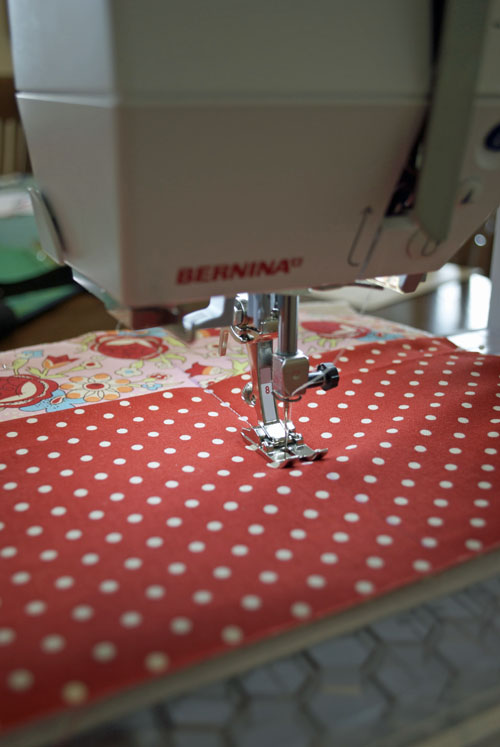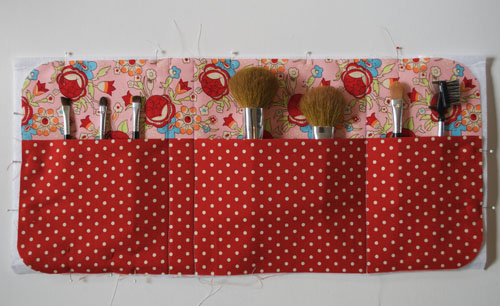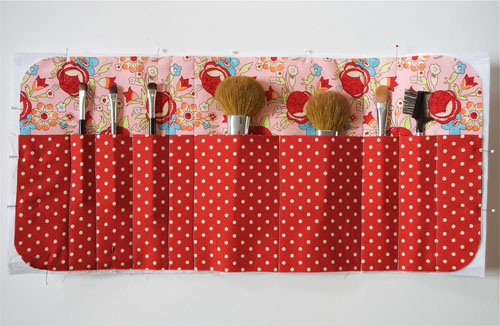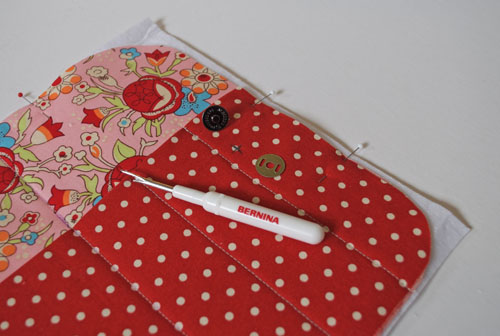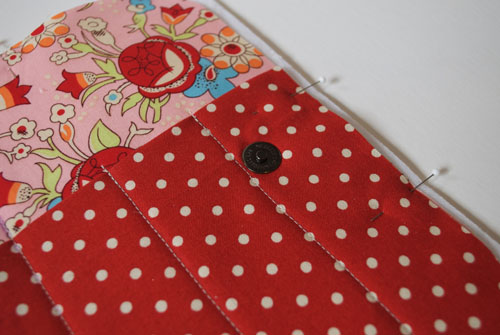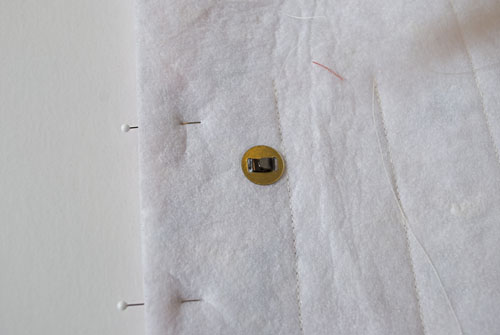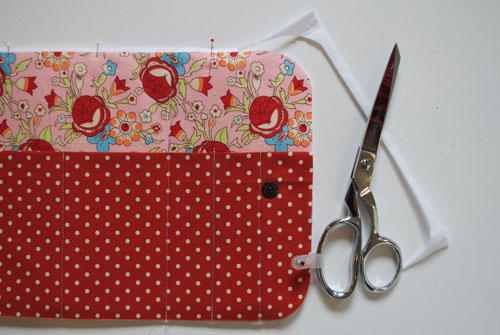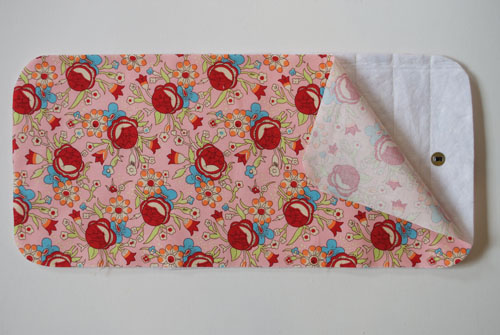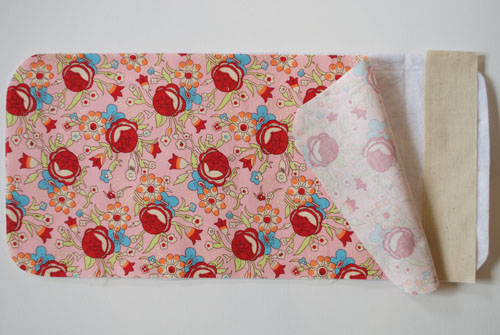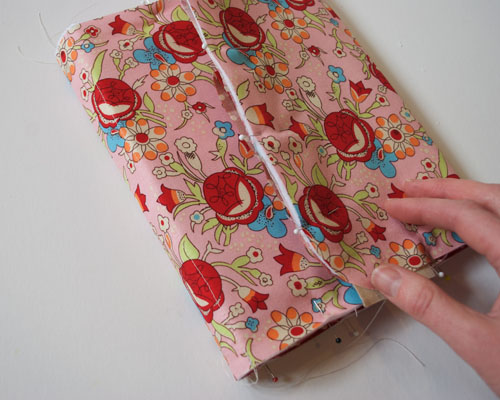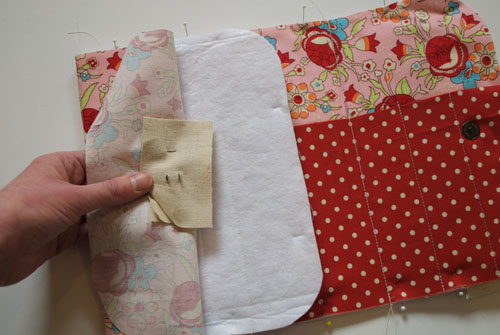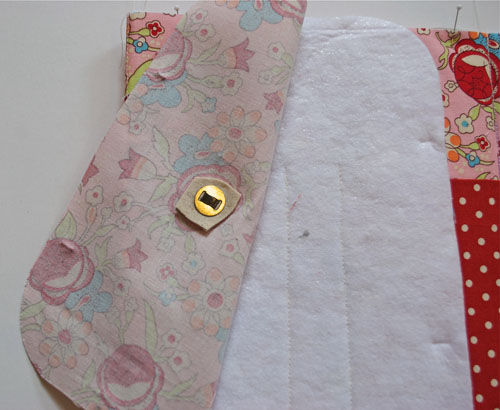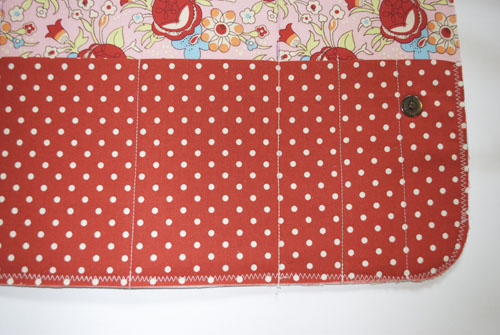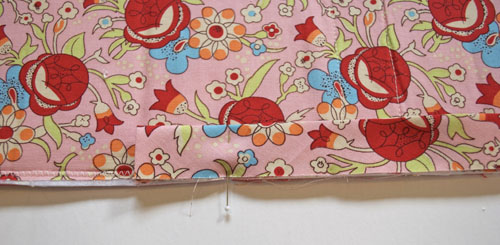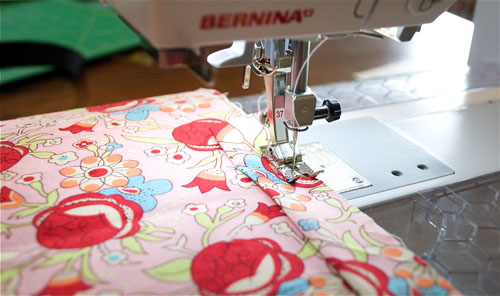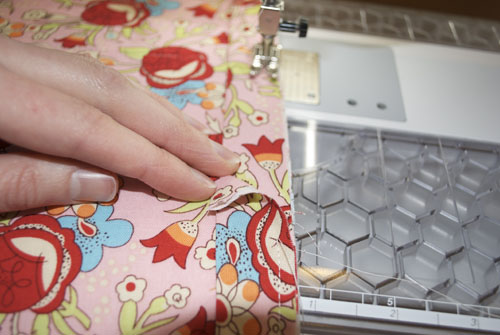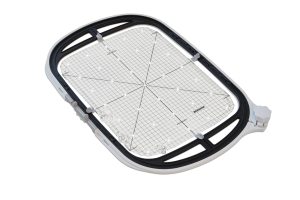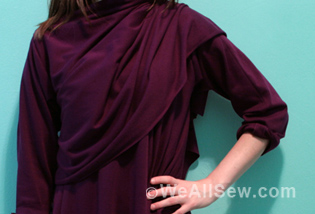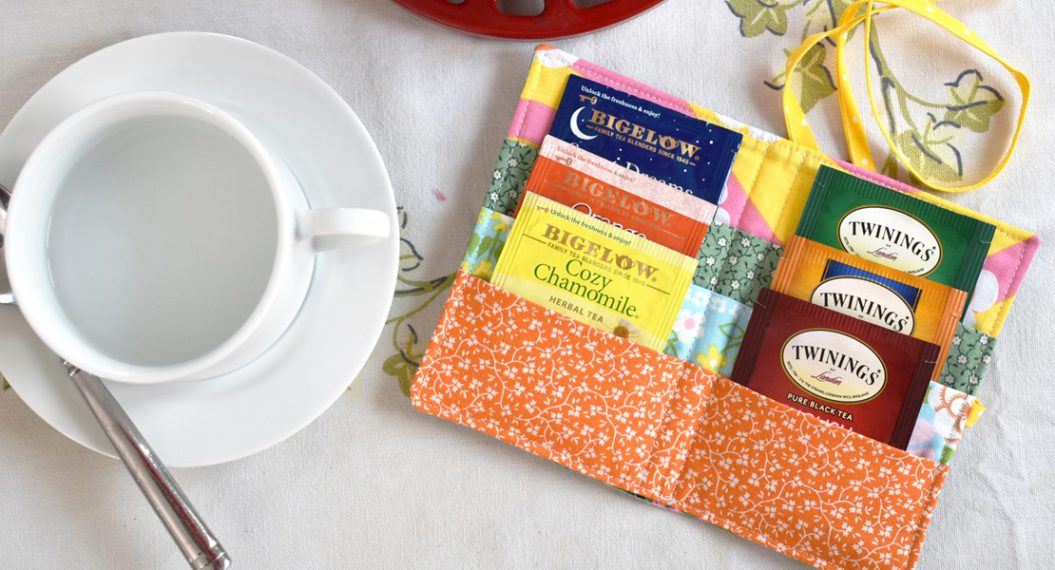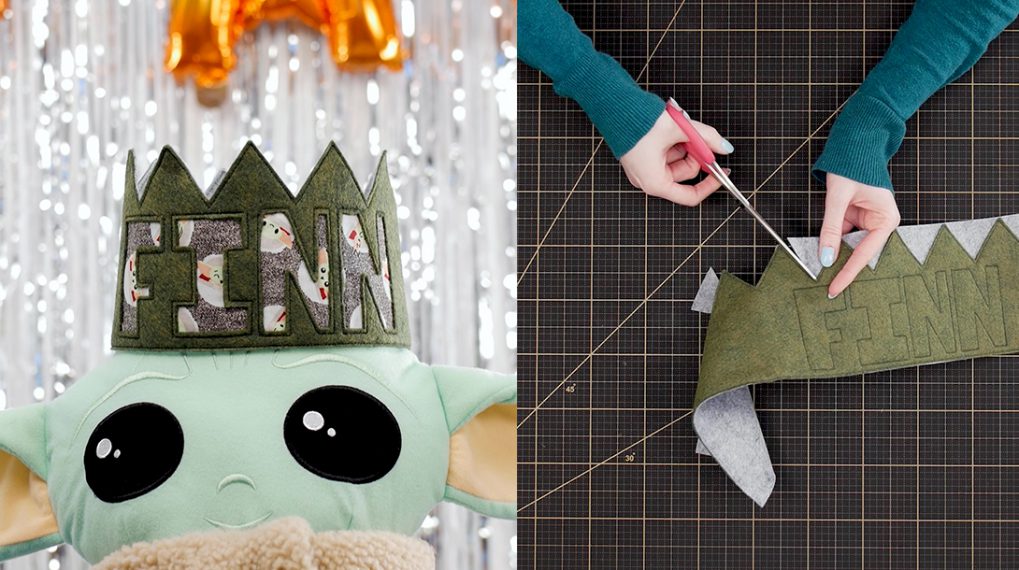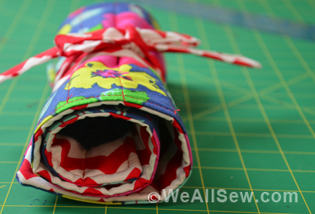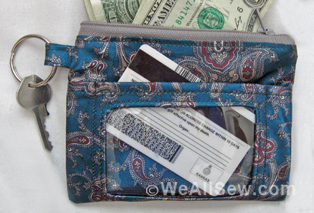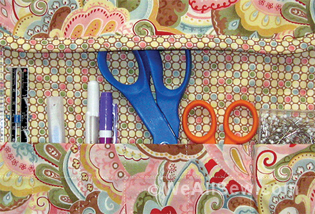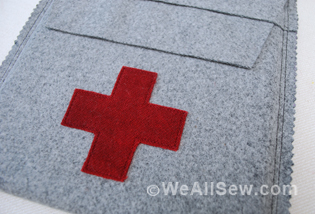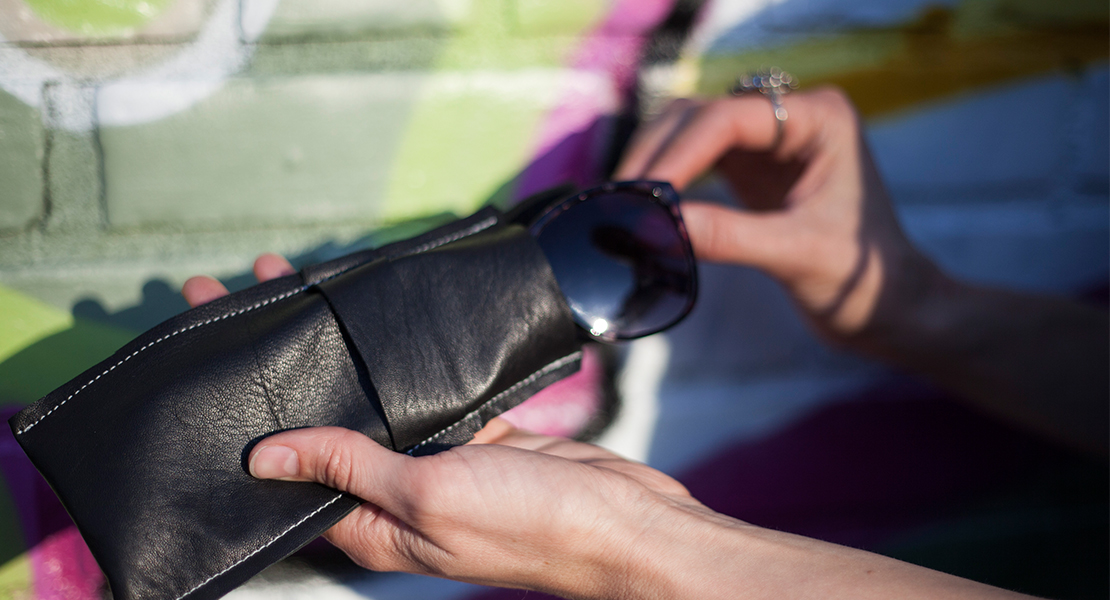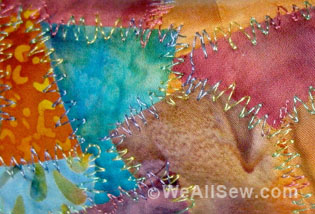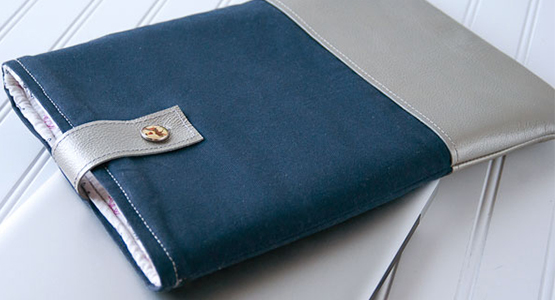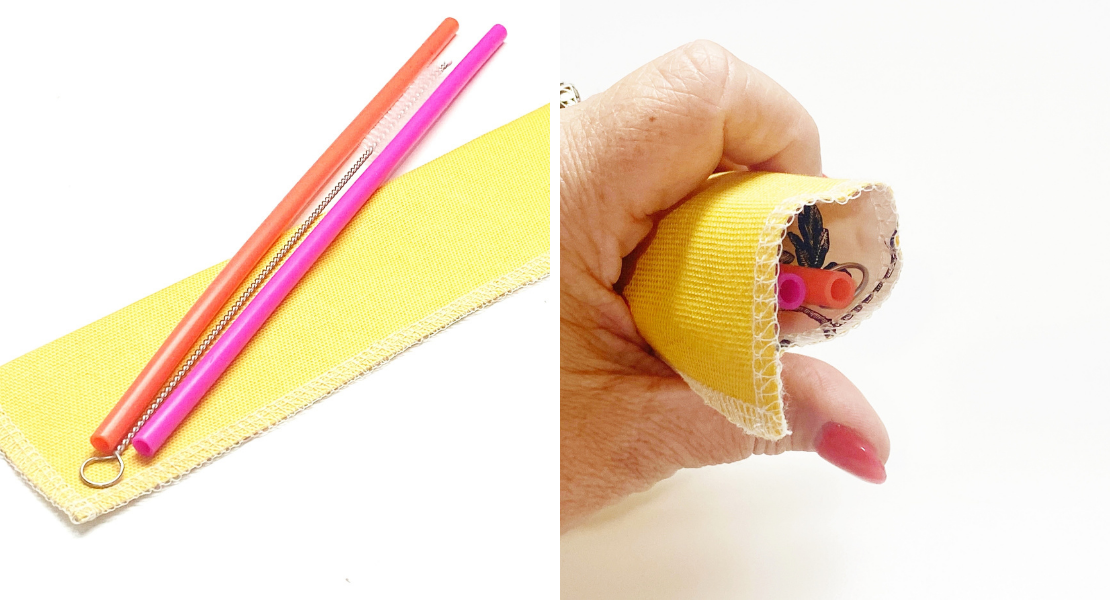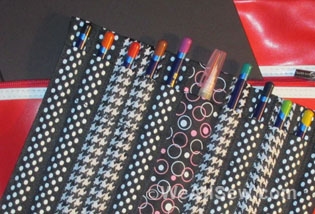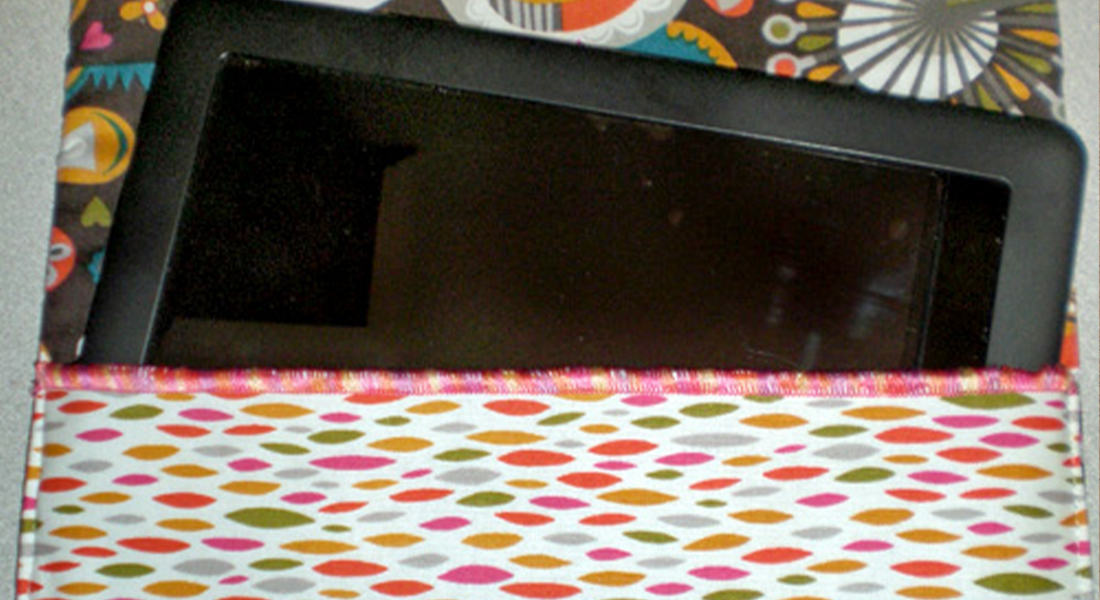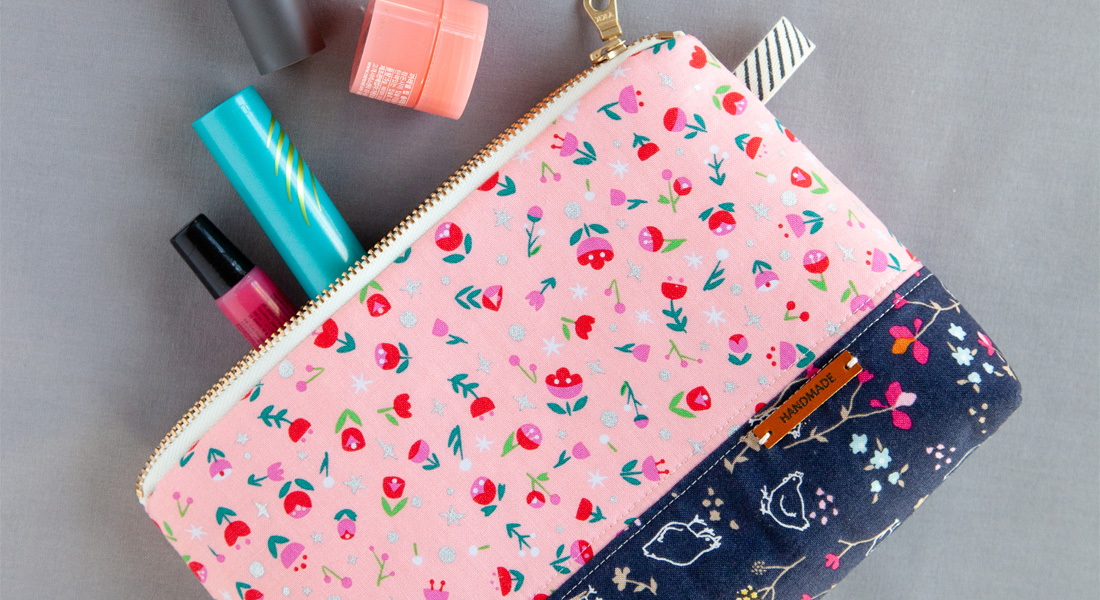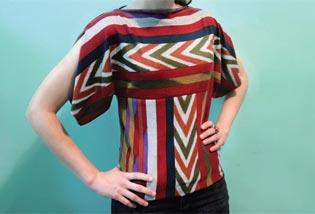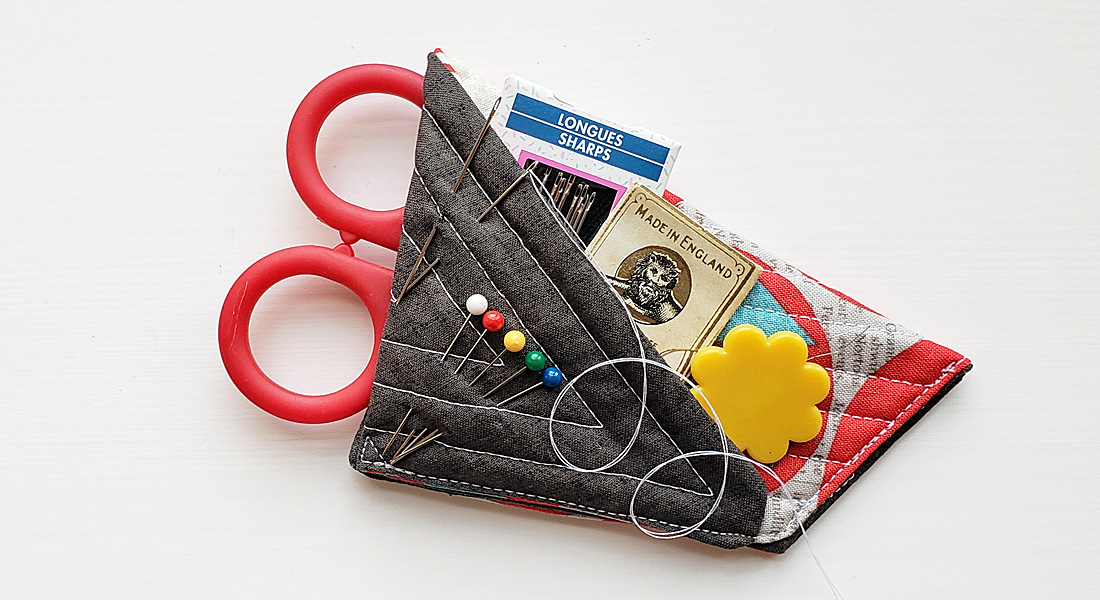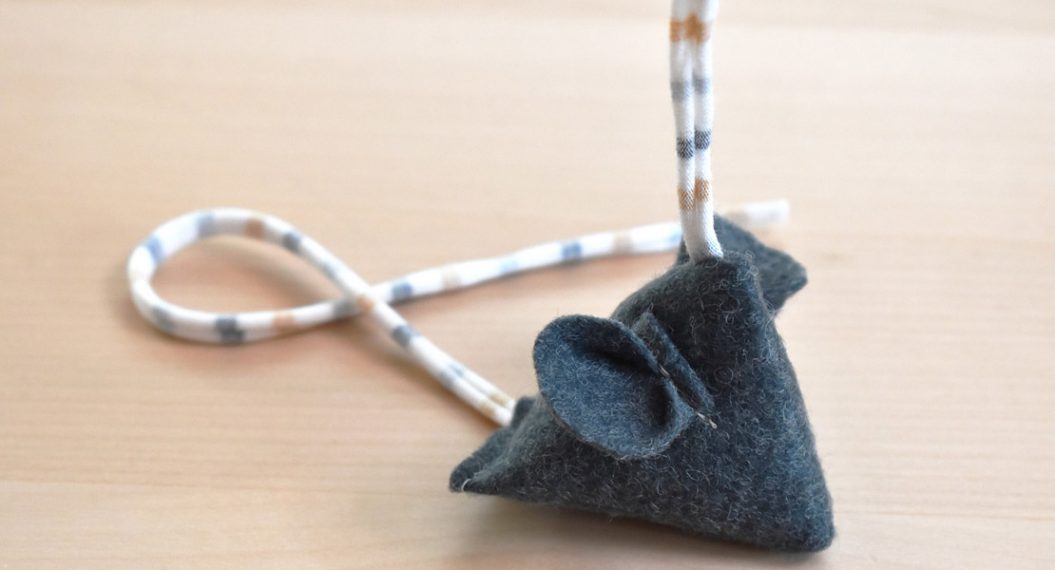How to Make a Folding Cosmetic Brush Case
This makeup case will store your precious brushes in style while you are on the go or simply keep them organized at home. Any girl that is serious about her makeup will want one of these to preserve her tools. This case is meant to be customized for the types of brushes you need to store. You can easily alter the dimensions to match petite or oversized brushes.
Supplies
- Exterior fabric: one rectangle measuring 9″ x 19″
- Interior fabric: one rectangle measuring 9″ x 19″; this can be the same fabric as the exterior or a coordinating print
- Pocket fabric: one rectangle measuring 11″ x 19″; choose a coordinating fabric or the same fabric as above
- Thick interfacing (such as Peltex® #70 by Pellon): one rectangle measuring 9-1/2″ x 19-1/2″
- 2 yards of double- or single- fold bias binding
- A few little scraps of neutral-colored fabric
- One magnetic snap
- Coordinating thread
- Hand-sewing needle
- Purple water-soluble marking pen
The following supplies are not required to complete this project, but they will make it easier for you to get a neater result.
- Straight Stitch Jeans Foot #8
- Thread conditioner such as Thread Heaven® for handwork
Please remember to read the entire pattern before starting this project!
Step 1) Construct the pocket.
Fold the pocket piece in half, wrong sides together, and press so that you have a 5-1/2″ x 19″ rectangle. Place the two 9″ x 19″ rectangles on top of each other and align the pocket piece perfectly with the long raw edges, matching one of the long edges of the large rectangles. Place a small canister on the corners and trace a rounded edge.
Cut out the rounded edges through all layers. Place the exterior rectangle aside. Pin the interior and pocket layers together to stabilize them if you wish.
Center the interior rounded rectangle on top of the interfacing rectangle, right side facing up. Align the pocket raw edges with the bottom raw edges of the interior rectangle. Pin all layers together. With a purple pen mark vertical lines 6″ from the left side, 7″ from the left side and 14″ from the left side.
At this point I recommend switching the foot on your sewing machine to Jeans Foot #8. It will give you a better-quality stitch while sewing through thick layers. Alternatively, a walking foot is also useful to avoid shifting of the layers.
To customize the case for your own brushes, place your brushes inside the case and mark lines on the pocket where you wish to create slots. Large brushes will need a lot of space, while small ones need hardly any at all. Leave at least 1-1/2″ free on the right to accommodate the snap.
Sew along these lines.
Step 2) Place the magnetic snap pieces.
Following the manufacturer’s instructions, place the first half of the magnetic snap on the right side of the case. Find and mark the middle of the case, about 1-1/4″ away from the raw edge. I like to use a stitch ripper to make little holes for inserting the snaps.
Front view.
Back view.
Trim the interfacing all around the rounded interior fabric rectangle.
Place the exterior rectangle facing up on top of the interfacing.
You will probably notice that the backside of the snap can be seen through the fabric. This can be remedied by placing a strip of neutral-colored fabric on top of the snap. Make the strip long enough so that the binding seam will hold it in place later.
Pin around the perimeter of the case. With the interior of the case facing up, sew along the three lines you created in steps 2 and 3. These seam lines will help the case fold up neatly.
Place the second part of the snap on the case. Because you are only going through one layer of fabric, I recommend stabilizing the snap with three layers of scrap fabric.
Once the snap is in place, trim the fabric around it.
Step 3) Bind the case.
Make sure that the perimeter of your case is heavily pinned and that you have a zigzag foot on your sewing machine. (If you have been using a straight-stitch foot, such as Jeans Foot #8, it is important that you switch to an all-purpose foot such as #1.) Zigzag close to the edge all around the perimeter of the case.
If you are using pre-made double-folded bias tape, follow the manufacturer instructions to bind the outer edge of the case. I will be using 2” single-folded bias binding as described below:
- Fold one end of the binding wrong sides together to “finish” the edge.
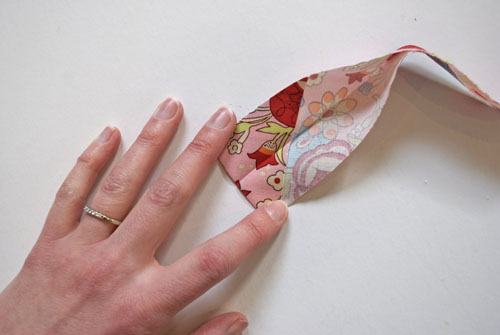
- Match the raw edges of the exterior of the case with the raw edges of the binding. Place one pin about 1” from the folded binding edge.
- Sew the binding to the case with a 1/4″ seam allowance (you can use Quilting/Patchwork Foot #37) starting at the pin and being careful to give the tape some slack in the curves.
- When you have come almost all around the case, stop with your needle down about ½” before the folded edge. Cut away the excess binding.
- Tuck the raw end of the binding into the folded edge. Finish sewing the binding to the case.
- Fold the binding over to the inside of the case. With a hand-sewing needle and thread (I recommend conditioning the thread for this step) sew the binding neatly and invisibly to the interior to finish the case.
